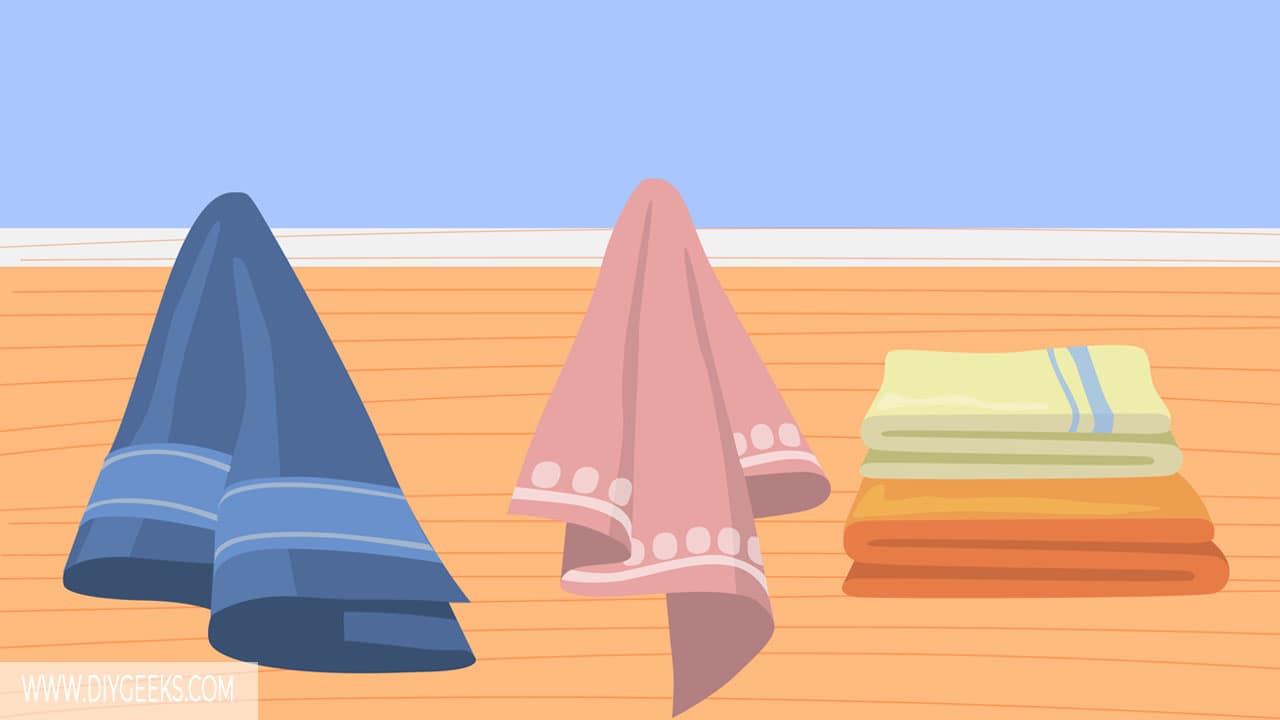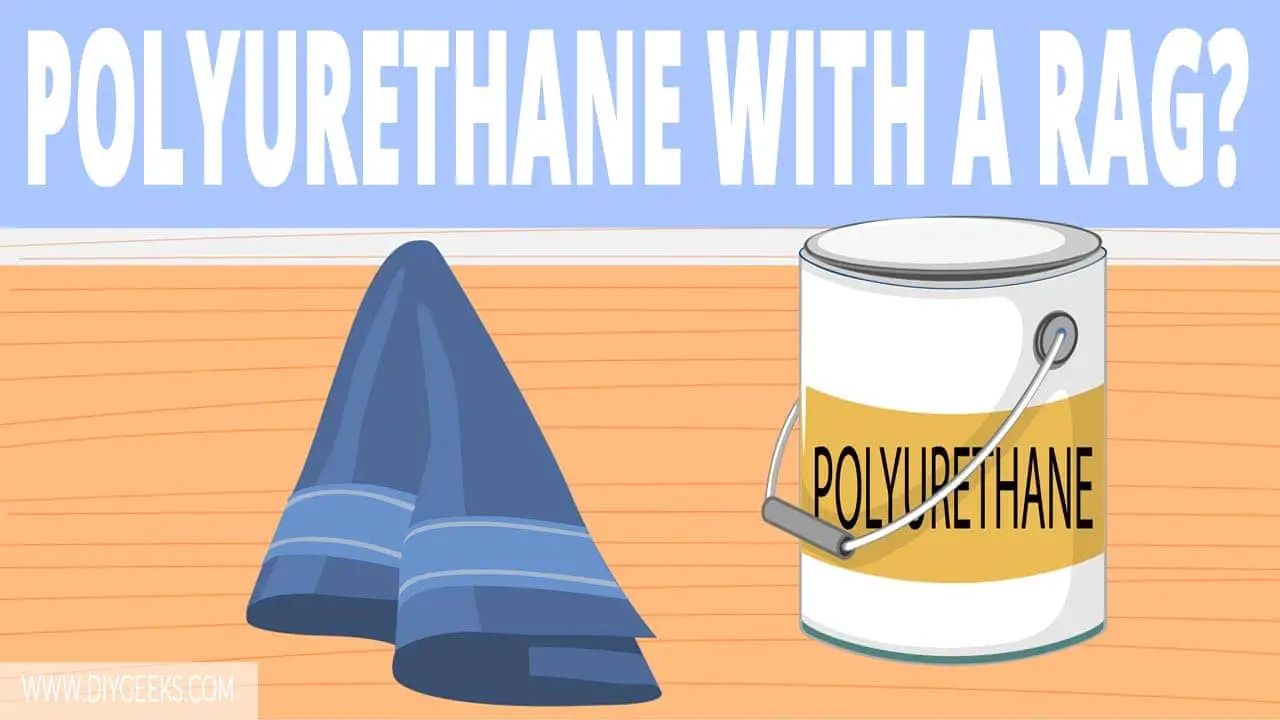You can apply polyurethane to get thin coats and prevent drips, brush marks, and bubbles. You must use a lint-free or microfiber cloth to apply it.
To apply polyurethane with a rag, prep the surface, dip the rag into the polyurethane, sand between coats, and apply the next coats.
Always wipe the polyurethane excess from the rag and the surface as the finish can turn sticky or tacky if you don’t.
Why Should You Use A Rag To Apply Polyurethane?
You should use a rag to apply polyurethane to get thin coats, prevent drips, brush marks, or bubbles, and help the sealer dry faster. A rag will also help you to apply polyurethane in hard-to-reach areas, such as a vertical surface.
But, you need more coats when using a cloth. You need 8 coats of wipe-on polyurethane to get the same finish you would with 3 coats with a brush.
On the other hand, applying polyurethane with a brush has some disadvantages too. For example, the brush can cause dripping and building up of bubbles, bumps, and brush marks. And, some parts of the surface are left uncovered sometimes.
What Type Of Rag Do You Need For Polyurethane?

You need to use a lint-free or microfiber tack cloth to apply polyurethane. The wrong type or a bad-quality rag, such as a tint rag, will produce a bad and uneven finish.
If you don’t want to use a lint-free cloth, use a microfiber tack rag. They are specially made to remove dust from different surfaces, but they are also good with polyurethane since they absorb it evenly.
Never use the same old cloth twice to apply polyurethane. After the first time, the absorption rate of the cloth will be heavily reduced, and this can produce an uneven finish for the next time.
However, you can use old cloths that haven’t been used to apply a sealer before. Just make sure to clean the dirt or dust before you use it.
How To Apply Polyurethane With A Rag?
To apply polyurethane with a rag, do the following things.
- Prep the Surface.
- Dip the Rag into Polyurethane.
- Sand Between Coats.
- Apply the Next Coats.
1. Prepare the Surface
Prep the surface by sanding it with fine-grit sandpaper (220-grit) to remove surface imperfections and bumps, and create a smooth surface.
If the surface is riddled with too many imperfections, use medium-grit sandpaper (100-grit) as it’s rougher and removes more imperfections.
Clean the surface with a damp rag after sanding to remove the dust.
2. Dip the Rag into Polyurethane
Pour the polyurethane into a container or bucket. Avoid shaking the can before opening as it can cause air bubbles.
Dip the lint-free rag into the polyurethane bucket, wipe the excess, and wipe it over the surface to apply it. Apply thin layers and move the rag in lined motions while overlapping the strokes to get good coverage.
3. Sand Between Coats
Once the first coating dries, sand between polyurethane coats with very fine-grit sandpaper (440-grit) to remove the finish imperfections or bumps.
Water-based polyurethane takes around 6-8 hours to dry, while oil-based polyurethane takes around 24 hours to dry between coats.
Ensure to clean the surface with a clean cloth after sanding to remove the dust.
4. Apply the Next Coats
Apply the next polyurethane coats by using the same techniques. Dip the lint-free rag into the polyurethane container, wipe the excess, and use the rag to wipe the surface in lined motions until you cover the whole surface.
The number of polyurethane coats depends on your needs, but 5 coats is the maximum.
Do You Wipe Off Excess Polyurethane?
You must always wipe off the excess polyurethane to prevent drips on the finish. This is such an important tip that many manufacturing companies print this instruction on the can so that users can see it.
The polyurethane will turn sticky, and tacky, and will drip off the surface if you don’t wipe off the excess. If the sealer dries in that condition, you must sand the drips off the surface.
You can accidentally remove the whole layer while trying to sand off the dried drips from the surface. So, leave the sealer to dry for 30 minutes and then wipe off the excess from the surface using a cloth.
If the polyurethane dries too fast, dip a cloth into mineral spirits and wipe the coating. After 5 minutes, remove the mineral spirits from the finish as it can remove the layer.
Can You Apply Brush-on Polyurethane With a Rag?
You can apply brush-on polyurethane with a rag, but doing so is harder. The brush-on polyurethane must be thin enough so the rag doesn’t absorb too much of it.
Wipe-on polyurethane is thinned with mineral spirits to prevent the cloth from absorbing too much of it. If the sealer is too thick, the cloth will absorb too much, leading to an uneven and dripping finish after it has been applied.
So, you need to pay attention to the quantity of polyurethane the rag absorbs. So, the best way to apply brush-on polyurethane is to thin it and then use a rag to apply it.


